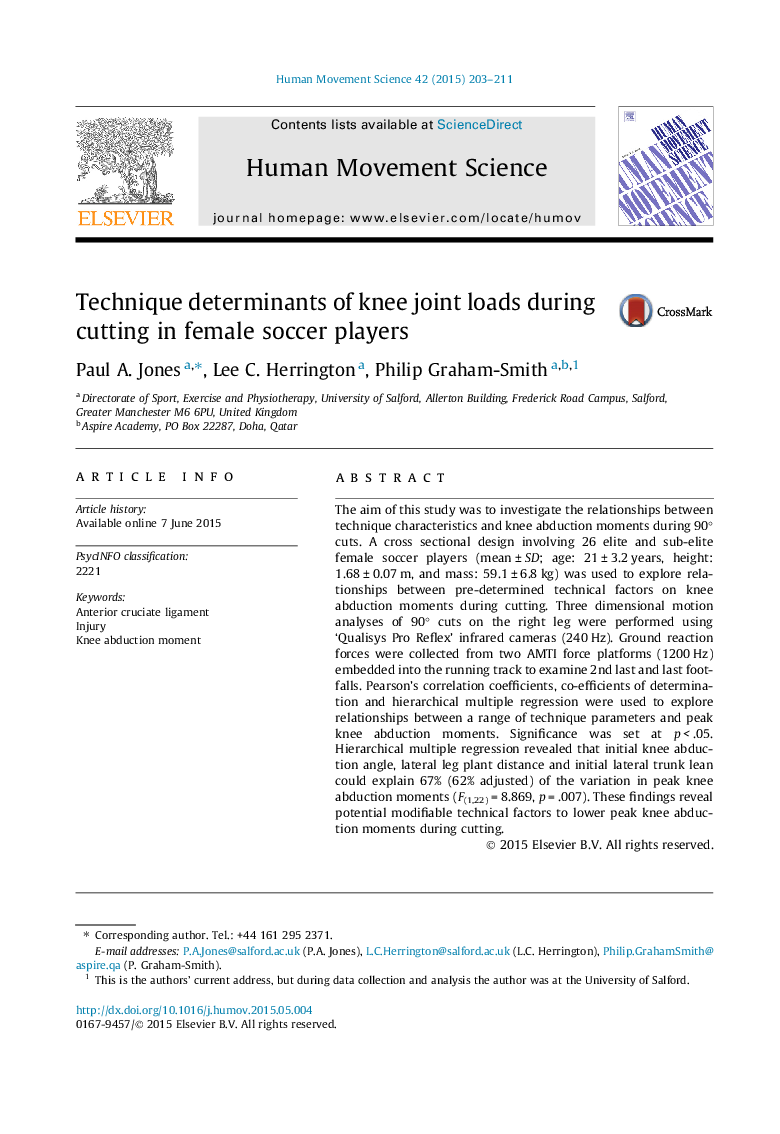| Article ID | Journal | Published Year | Pages | File Type |
|---|---|---|---|---|
| 928241 | Human Movement Science | 2015 | 9 Pages |
•Biomechanical determinants of knee abduction moments during cutting were examined.•Initial knee abduction angle was the best predictor of peak knee abduction moments.•Lateral leg plant distance was related to peak knee abduction moments.•Lateral trunk flexion angle was related to peak knee abduction moments.•Technique modification for cutting should aim to reduce these variables.
The aim of this study was to investigate the relationships between technique characteristics and knee abduction moments during 90° cuts. A cross sectional design involving 26 elite and sub-elite female soccer players (mean ± SD; age: 21 ± 3.2 years, height: 1.68 ± 0.07 m, and mass: 59.1 ± 6.8 kg) was used to explore relationships between pre-determined technical factors on knee abduction moments during cutting. Three dimensional motion analyses of 90° cuts on the right leg were performed using ‘Qualisys Pro Reflex’ infrared cameras (240 Hz). Ground reaction forces were collected from two AMTI force platforms (1200 Hz) embedded into the running track to examine 2nd last and last footfalls. Pearson’s correlation coefficients, co-efficients of determination and hierarchical multiple regression were used to explore relationships between a range of technique parameters and peak knee abduction moments. Significance was set at p < .05. Hierarchical multiple regression revealed that initial knee abduction angle, lateral leg plant distance and initial lateral trunk lean could explain 67% (62% adjusted) of the variation in peak knee abduction moments (F(1,22) = 8.869, p = .007). These findings reveal potential modifiable technical factors to lower peak knee abduction moments during cutting.
